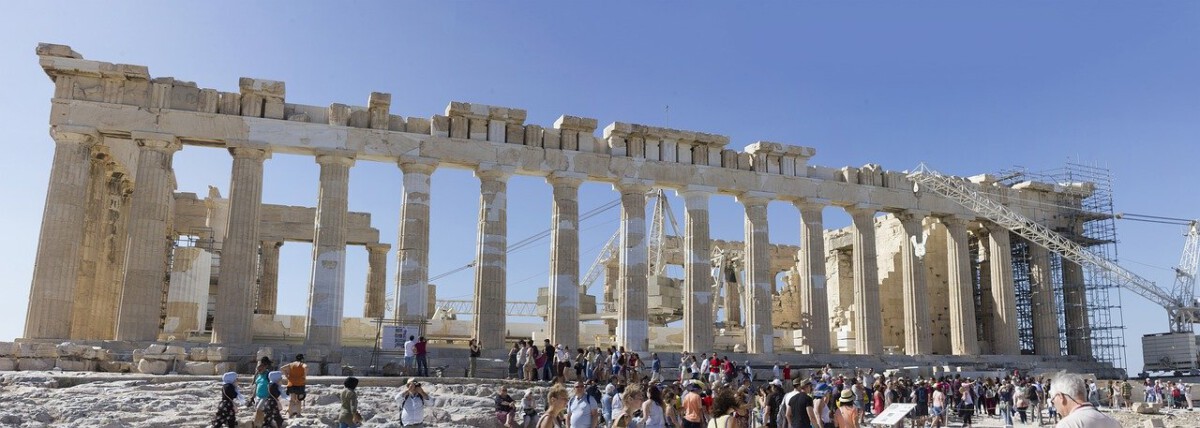The Acropolis: A Timeless Icon

Rising dramatically above the city, the Acropolis is a vision of ancient splendor that has captivated minds for centuries. Its marble columns and sacred temples are instantly recognizable, anchoring Athens as the birthplace of Western civilization. The site’s most famous landmark, the Parthenon, draws millions of visitors each year—over 3 million in 2024 alone, according to the Greek Ministry of Culture. Major restoration efforts have seen almost 80% of the monument stabilized and preserved by 2025, allowing new generations to witness its grandeur. Standing on the rocky plateau, visitors can sense the pulse of history, where philosophers once debated and democracy was born. The Acropolis remains a powerful reminder of the city’s artistic and political achievements. As sunlight bathes the ancient stones, the harmony of architecture and landscape leaves an unforgettable impression.
The Parthenon: Architectural Marvel

The Parthenon, perched atop the Acropolis, is more than just an ancient ruin—it is a testament to Greek ingenuity and aesthetic mastery. Designed by Ictinus and Callicrates, its precise proportions and graceful columns have influenced architecture for millennia. The temple was dedicated to Athena, the city’s guardian, and once sheltered a towering chryselephantine (gold and ivory) statue of the goddess crafted by Phidias. Visitors can still admire the delicate carvings on the frieze, which tell stories of gods, heroes, and epic struggles. The debate over the Parthenon’s sculptures, known as the Elgin Marbles, has grown more passionate in 2024, with renewed calls from Greek officials and UNESCO for their return from the British Museum. The Parthenon continues to inspire awe, symbolizing the enduring ideals of beauty and democracy.
The Erechtheion: A Unique Structure

Unlike the symmetrical Parthenon, the Erechtheion stands out for its unusual, multi-level design and deep religious significance. Built to honor both Athena and Poseidon, the temple sits on uneven ground, reflecting the mythological contest between the two gods for the city’s allegiance. Its most iconic feature, the Caryatids, are six graceful maidens carved in stone, serving as columns that support the temple’s porch. Recent archaeological studies have revealed evidence of ancient rituals performed within the Erechtheion, shedding light on the spiritual life of ancient Athenians. The original Caryatids are now preserved in the Acropolis Museum, while exact replicas guard the temple, ensuring their legacy endures. The Erechtheion’s mysterious beauty continues to captivate scholars and visitors alike, offering a window into Athens’ sacred past.
The Ancient Agora: Heart of Athenian Life

Nestled in the shadow of the Acropolis, the Ancient Agora was once the heartbeat of Athens. Here, citizens gathered to shop, debate, and shape the course of history. The Stoa of Attalos, now meticulously reconstructed, houses thousands of artifacts that reveal the vibrant daily life of classical Athens. Archaeological excavations in 2024 uncovered new inscriptions and pottery, offering fresh insights into democratic practices and social customs. The Agora was the stage for the city’s great orators and philosophers, including Socrates, who challenged citizens to think deeply about justice and ethics. As visitors wander among the ruins, they can imagine the lively markets and passionate debates that once filled the air. Today, the Agora stands as a living classroom, connecting the modern world to the roots of democracy.
The Temple of Olympian Zeus: A Colossal Tribute

The Temple of Olympian Zeus, also known as the Olympieion, commands attention with its immense scale and majestic columns. Construction spanned over 600 years, a testament to the ambition and changing fortunes of Athens. Only 15 of the original 104 Corinthian columns remain, but each soars over 17 meters high, dwarfing visitors and hinting at the temple’s former glory. Recent stabilization projects in 2024 have made the site safer for visitors and protected it from environmental damage. Once home to a colossal statue of Zeus, the Olympieion was a center of celebration and worship during ancient festivals. Today, the temple’s towering pillars provide a dramatic backdrop for modern Athens, linking the city’s vibrant present to its magnificent past.
The Odeon of Herodes Atticus: A Cultural Venue

Carved into the slopes of the Acropolis, the Odeon of Herodes Atticus is an ancient theater where history and art come alive. Built in 161 AD by the Roman consul Herodes Atticus in memory of his wife, this stone amphitheater seats around 5,000 people. Its impressive acoustics and elegant arches have hosted everything from ancient dramas to contemporary concerts. In 2024, the Athens Festival once again brought local and international artists to the Odeon’s storied stage, filling the summer nights with music and applause. Preservation efforts have ensured the theater’s original stone seating and facade remain intact, allowing audiences to experience performances much as the ancients did. For many, attending a show under the stars at the Odeon is an unforgettable highlight of a visit to Athens.
The National Archaeological Museum: A Treasure Trove

The National Archaeological Museum stands as Greece’s largest and most comprehensive collection of ancient artifacts. Established in the 19th century, it continues to attract over 1.5 million visitors each year. The museum’s galleries display everything from elegant Cycladic figurines to the golden Mask of Agamemnon, offering a sweeping panorama of Greek art and culture. The Antikythera Mechanism, often described as the world’s first analog computer, remains a centerpiece, drawing crowds eager to glimpse ancient technological genius. In 2024, new exhibitions spotlighted the roles and representations of women in ancient society, sparking meaningful conversations among scholars and the public. The museum’s ongoing research and rotating displays ensure there is always something new to discover within its marble halls.
The Plaka District: A Journey Through Time

Winding beneath the Acropolis, the Plaka district is a living mosaic of history, culture, and everyday life. Its narrow, labyrinthine streets are lined with pastel-colored houses, neoclassical mansions, and vibrant bougainvillea. Plaka’s bustling squares are alive with the sounds of street musicians, laughter from open-air tavernas, and the hum of friendly conversation. Small shops showcase handcrafted jewelry, ceramics, and textiles, offering visitors a taste of Greek artistry. In 2024, Plaka’s unique blend of old and new continues to charm both locals and travelers, making it one of the most photographed neighborhoods in Athens. Every corner reveals a story, from ancient ruins hidden in backyards to the aroma of freshly baked baklava drifting from family-run bakeries.
The Philopappos Hill: A Scenic Overlook

Philopappos Hill, often called the Hill of the Muses, offers one of the most breathtaking views in Athens. Its gentle trails are popular with walkers, picnickers, and photographers, all seeking the perfect angle on the city’s iconic skyline. At the summit stands the Philopappos Monument, a marble tomb honoring the Roman prince Gaius Julius Antiochus Philopappos, who was a benefactor of Athens. The hill is rich in legend, with sites such as the so-called “Socrates’ Prison” carved into its rocky slopes. As dusk falls, the Acropolis glows golden in the fading light, creating a magical panorama that draws crowds year-round. Locals often escape here for a peaceful moment away from city noise, while visitors savor the sense of connection to ancient and modern Athens alike.







